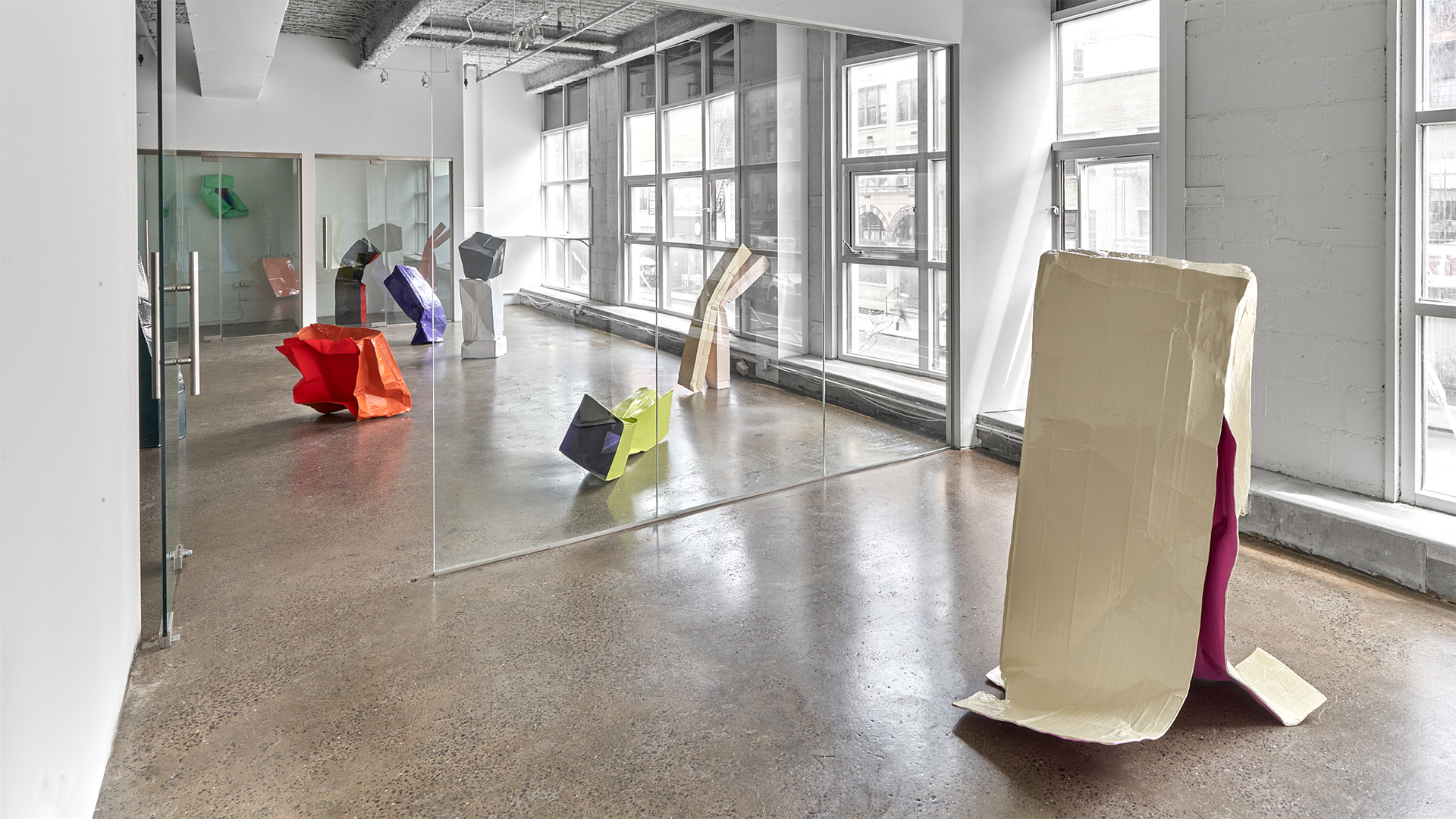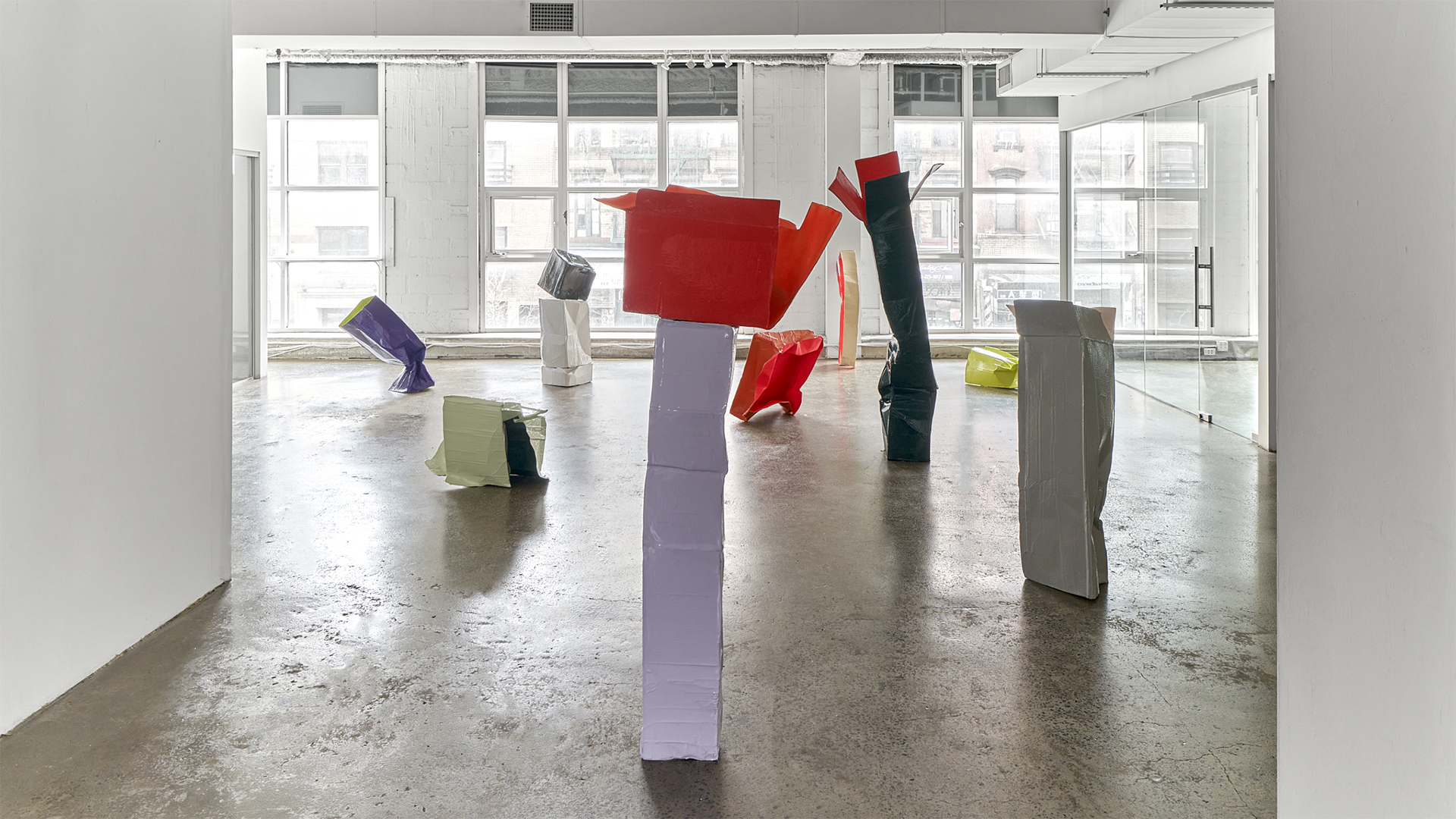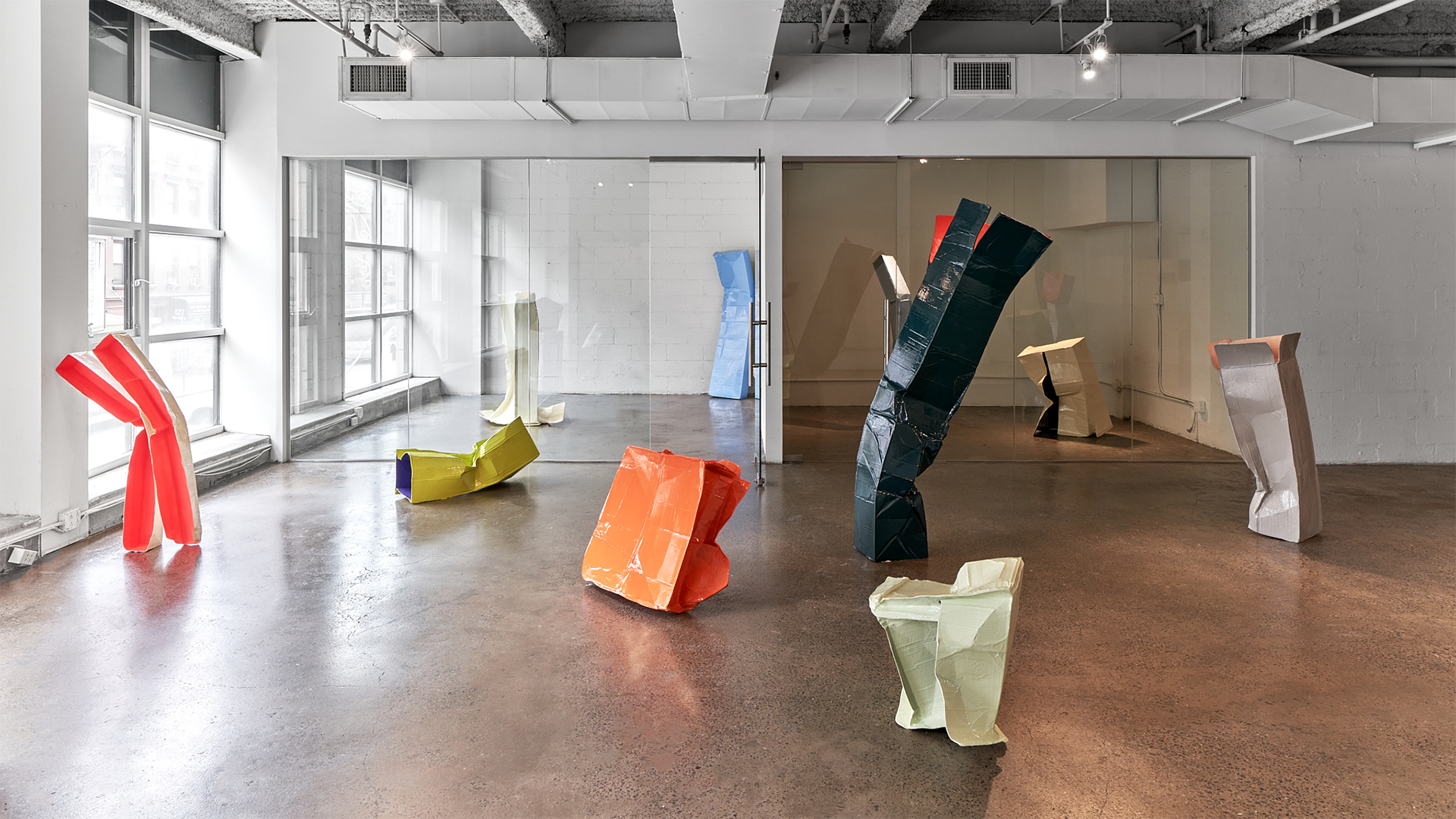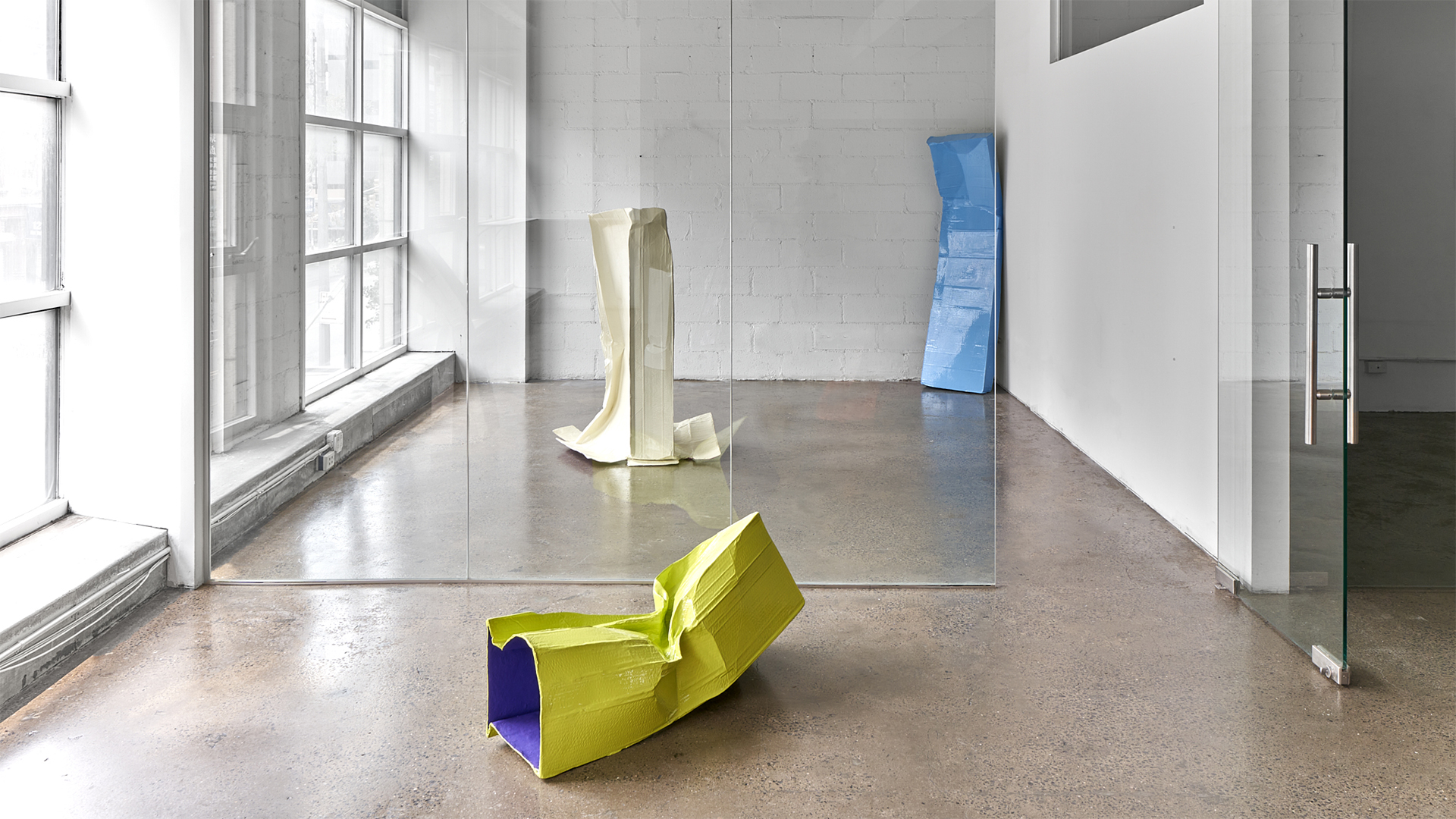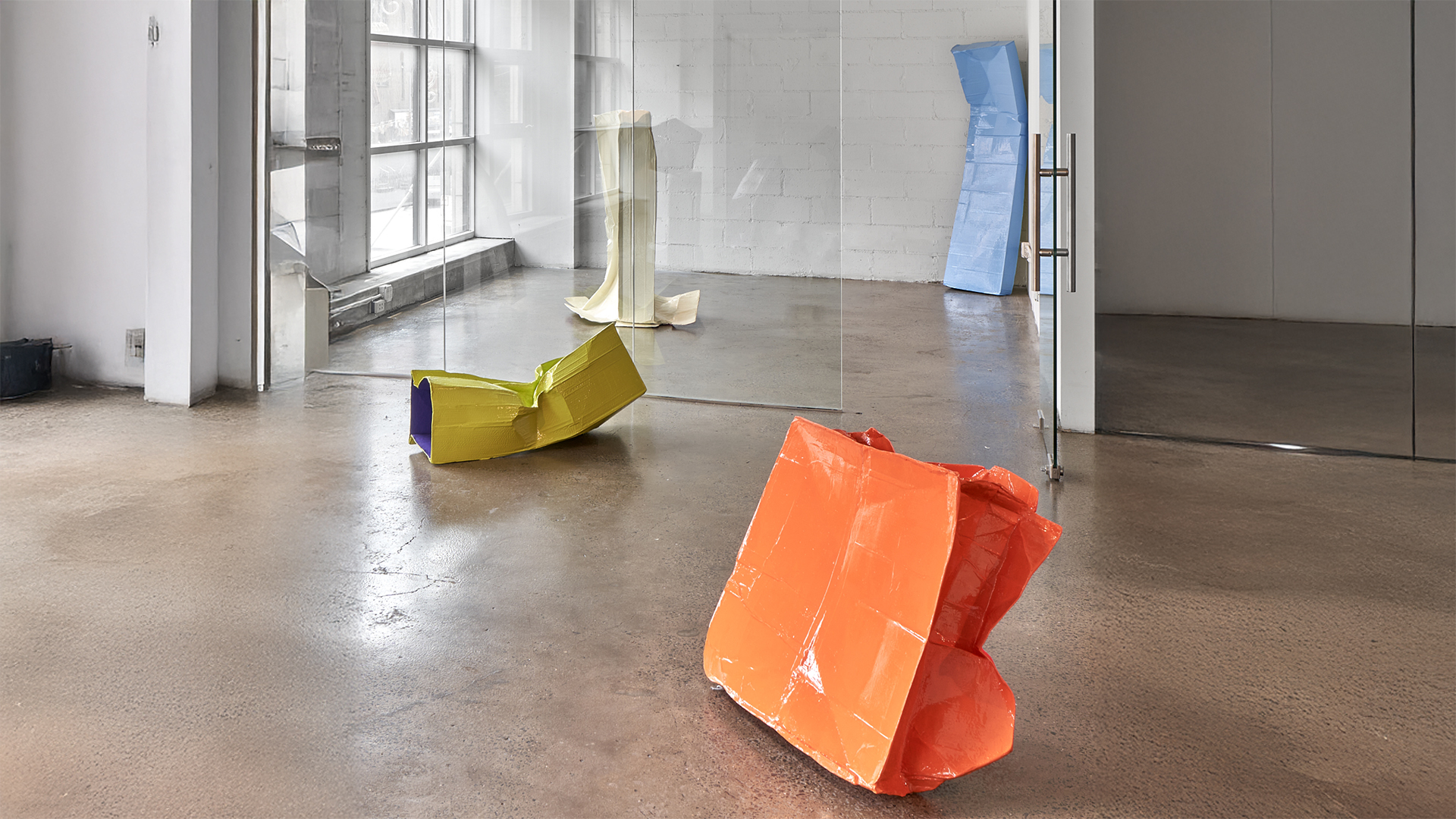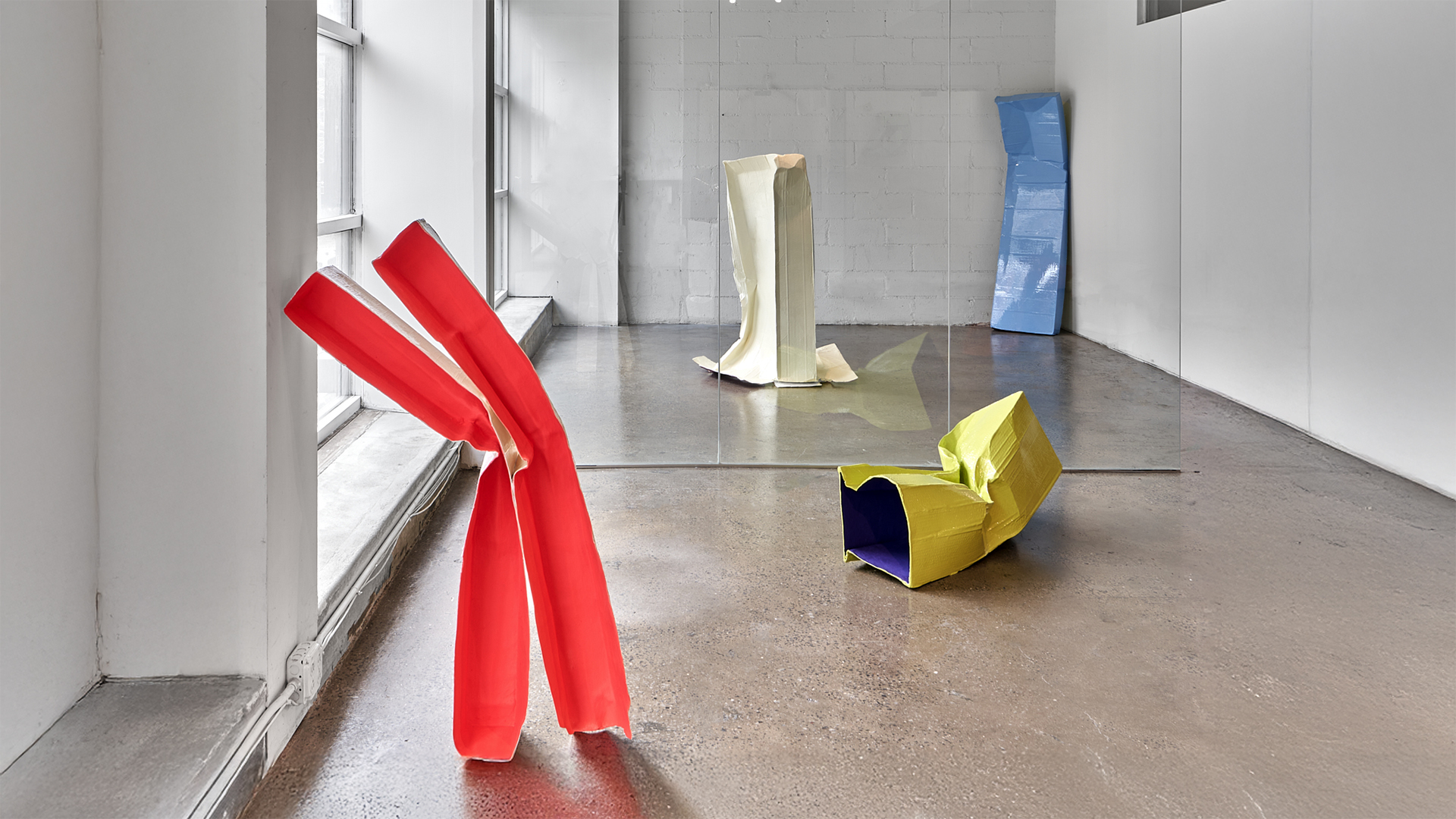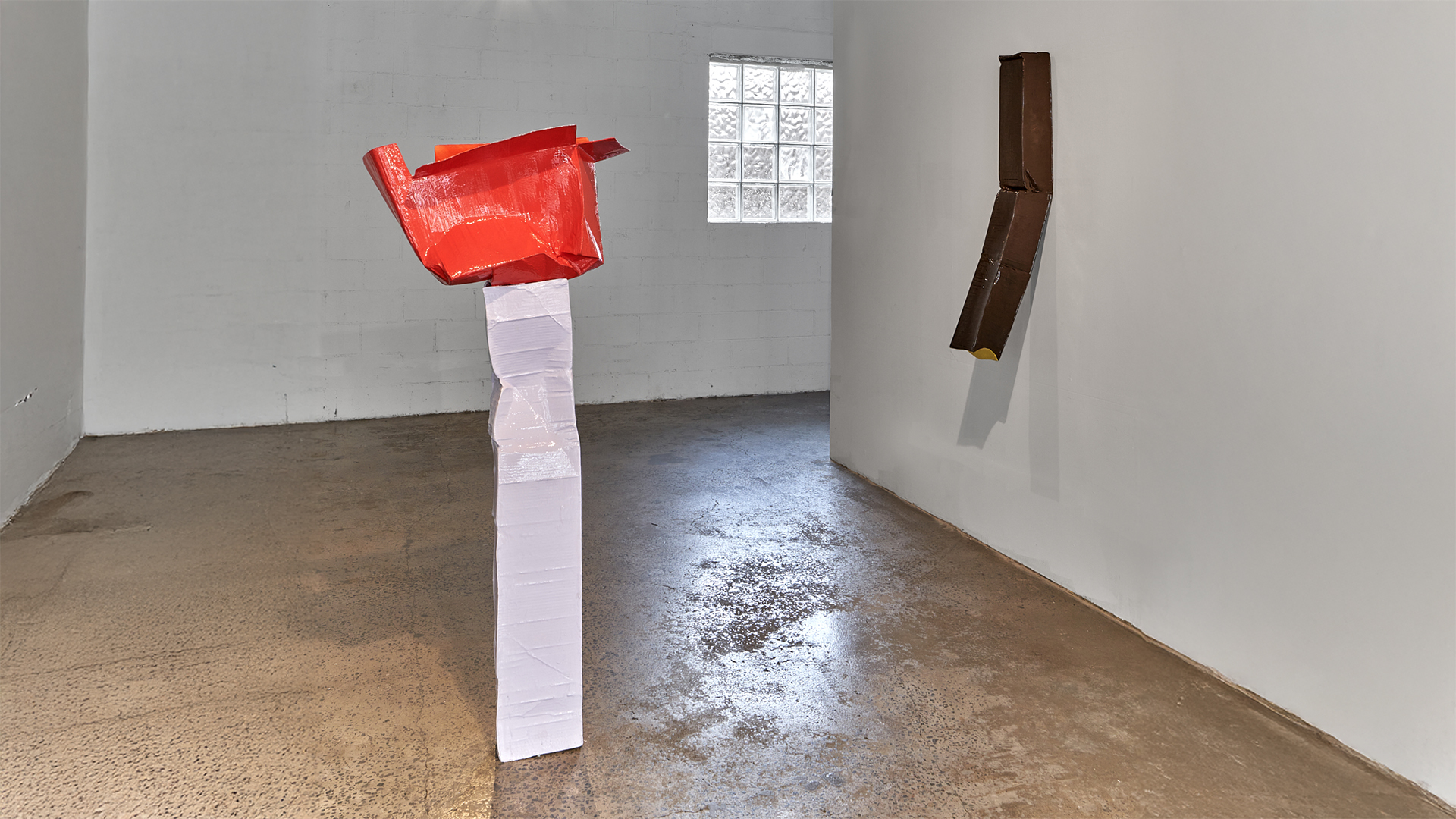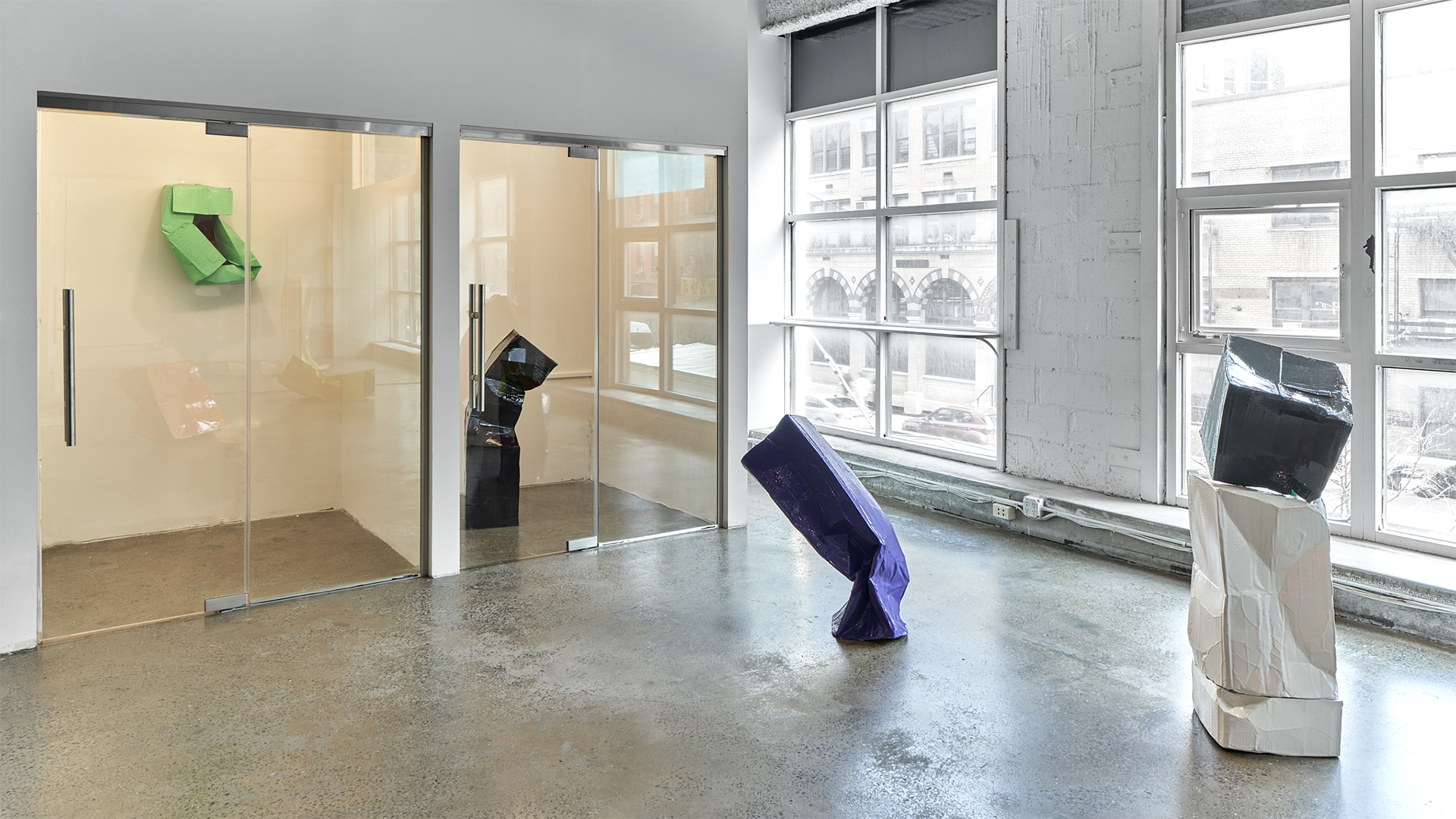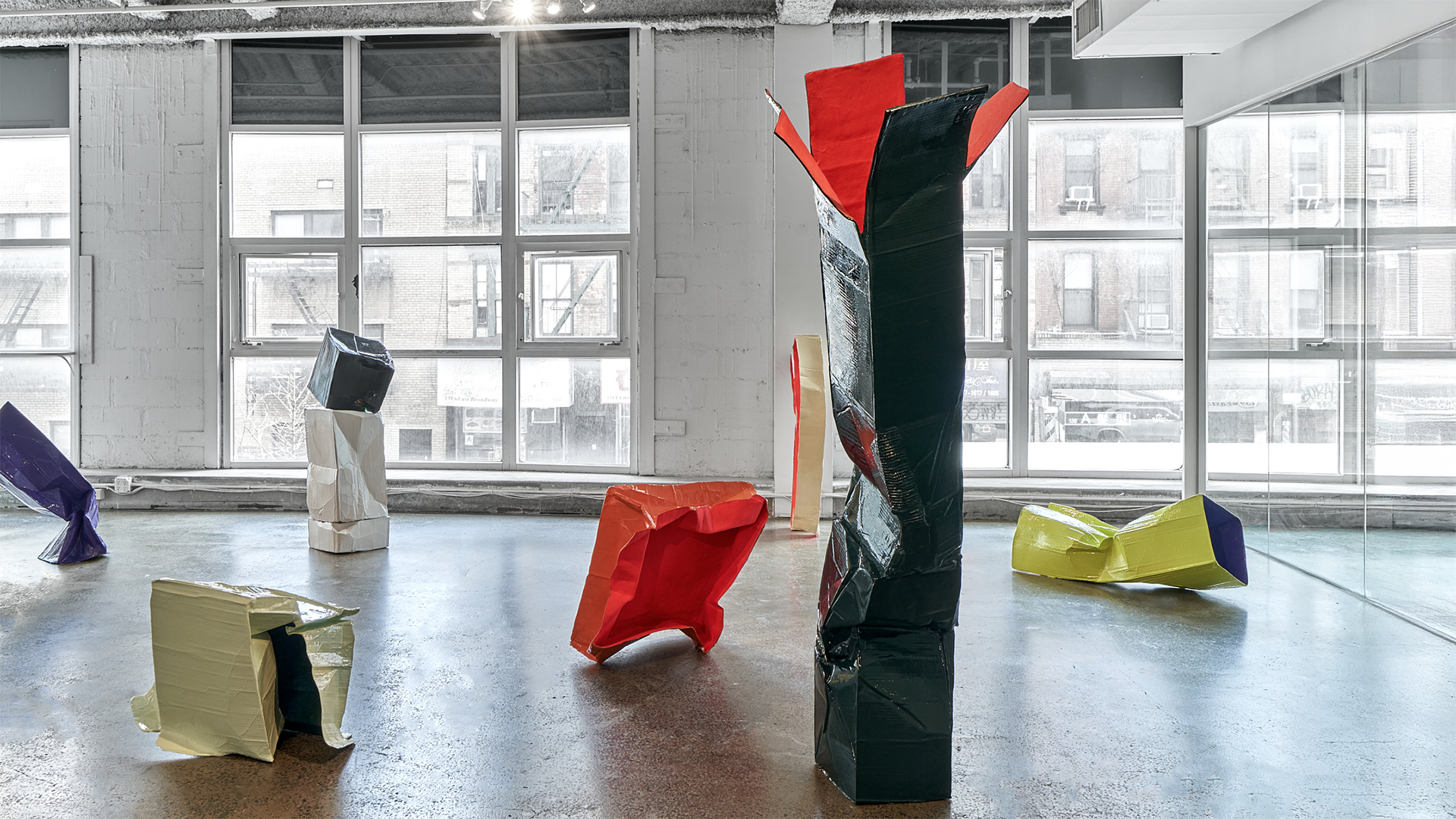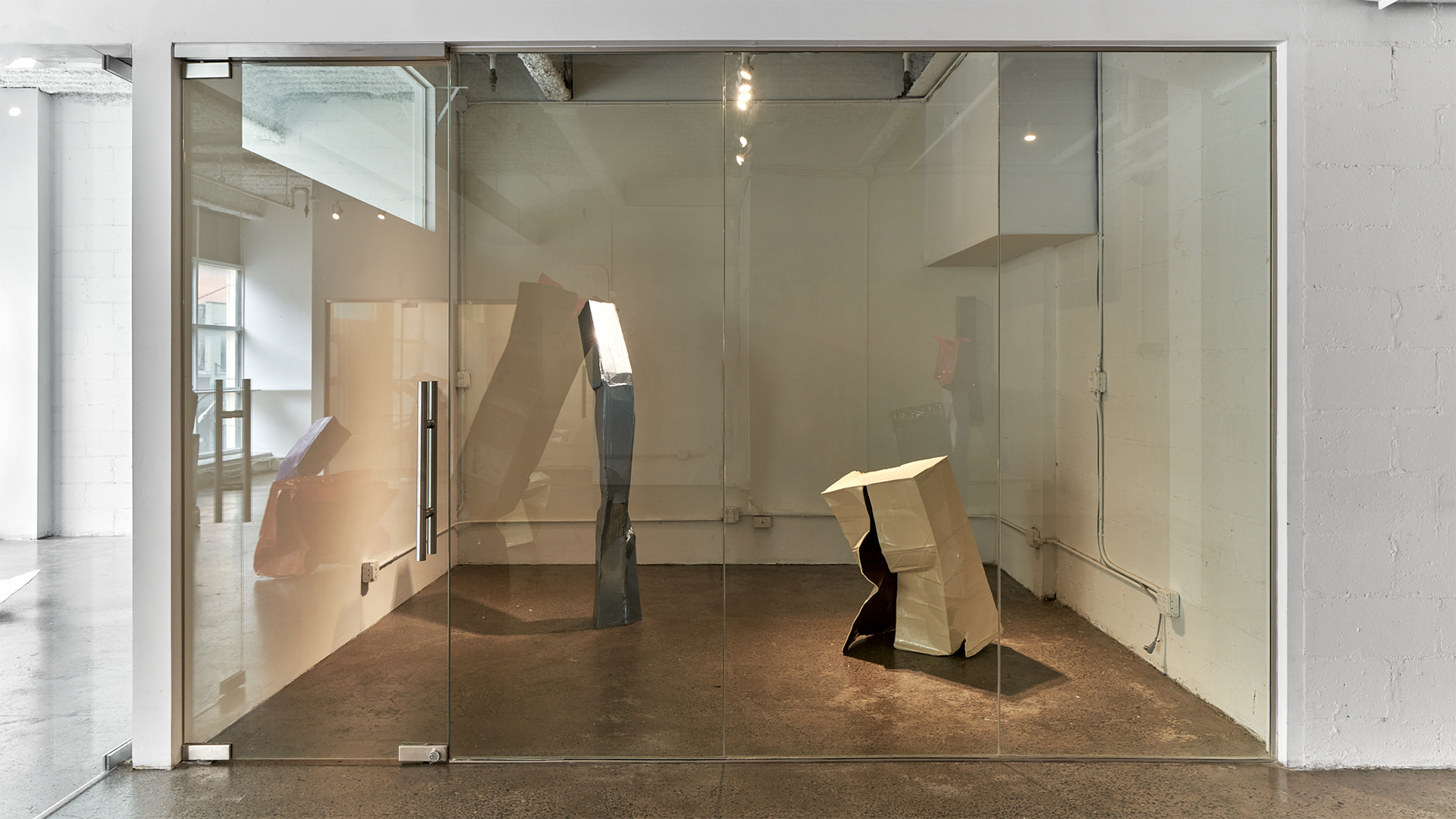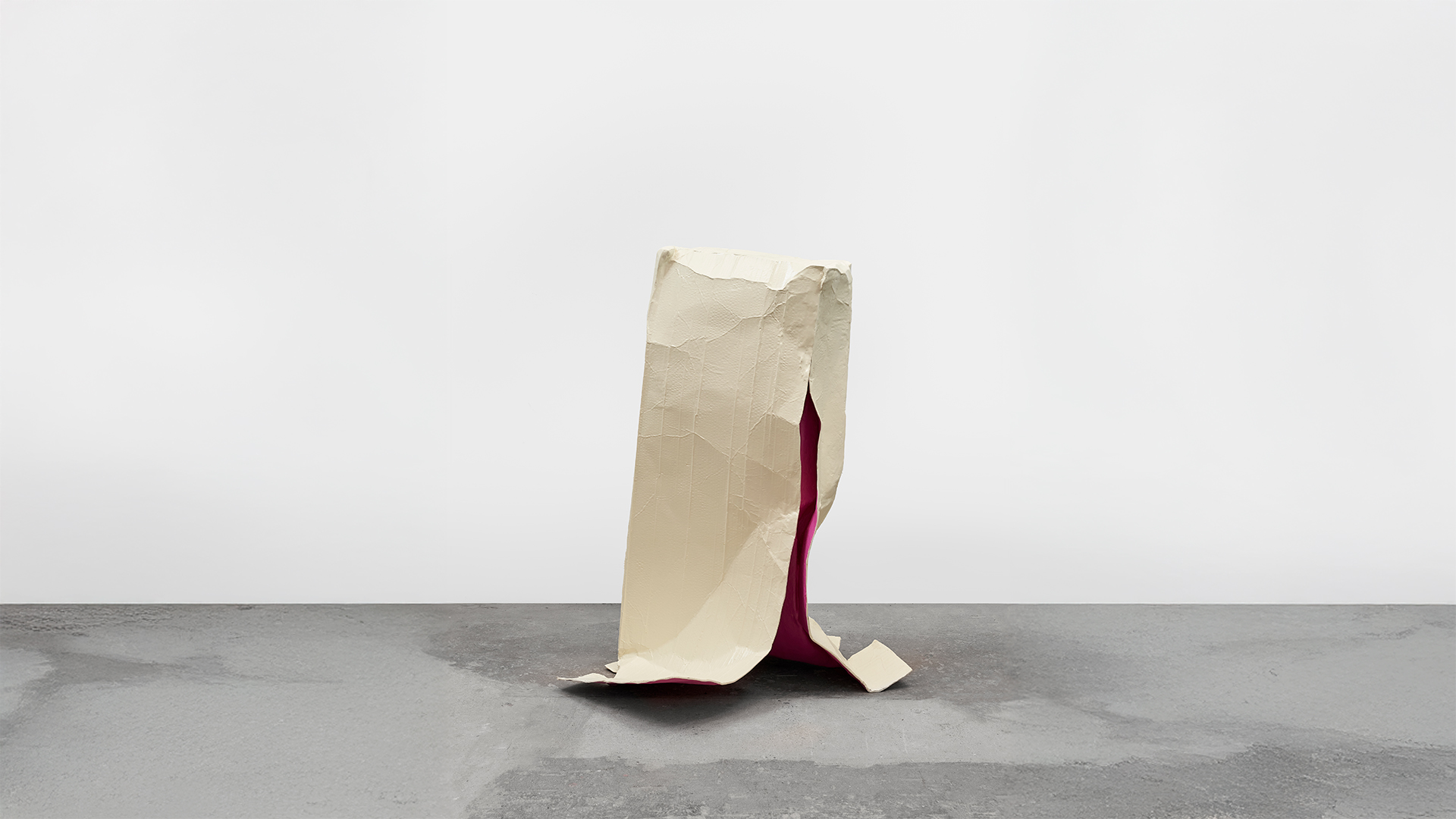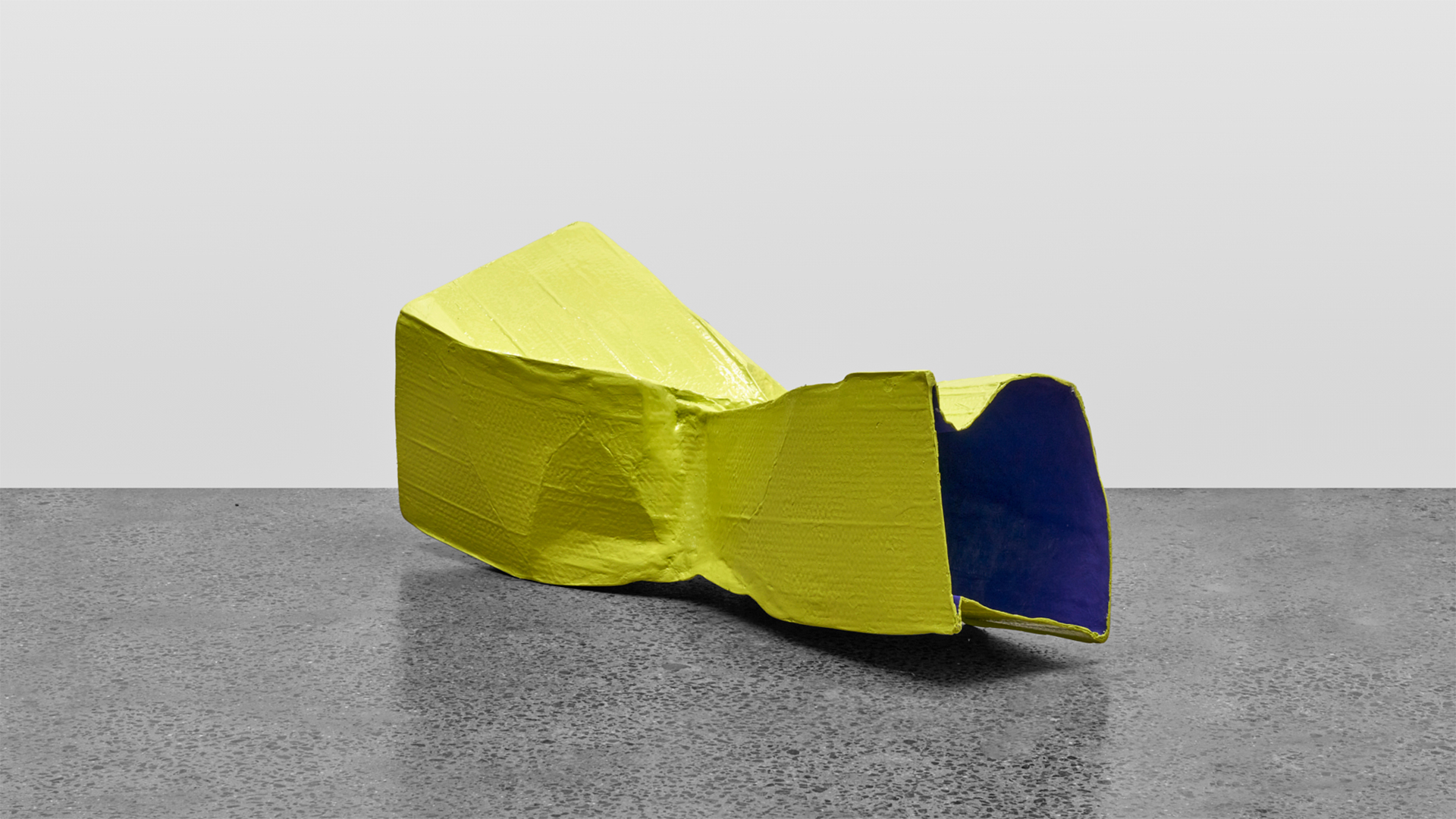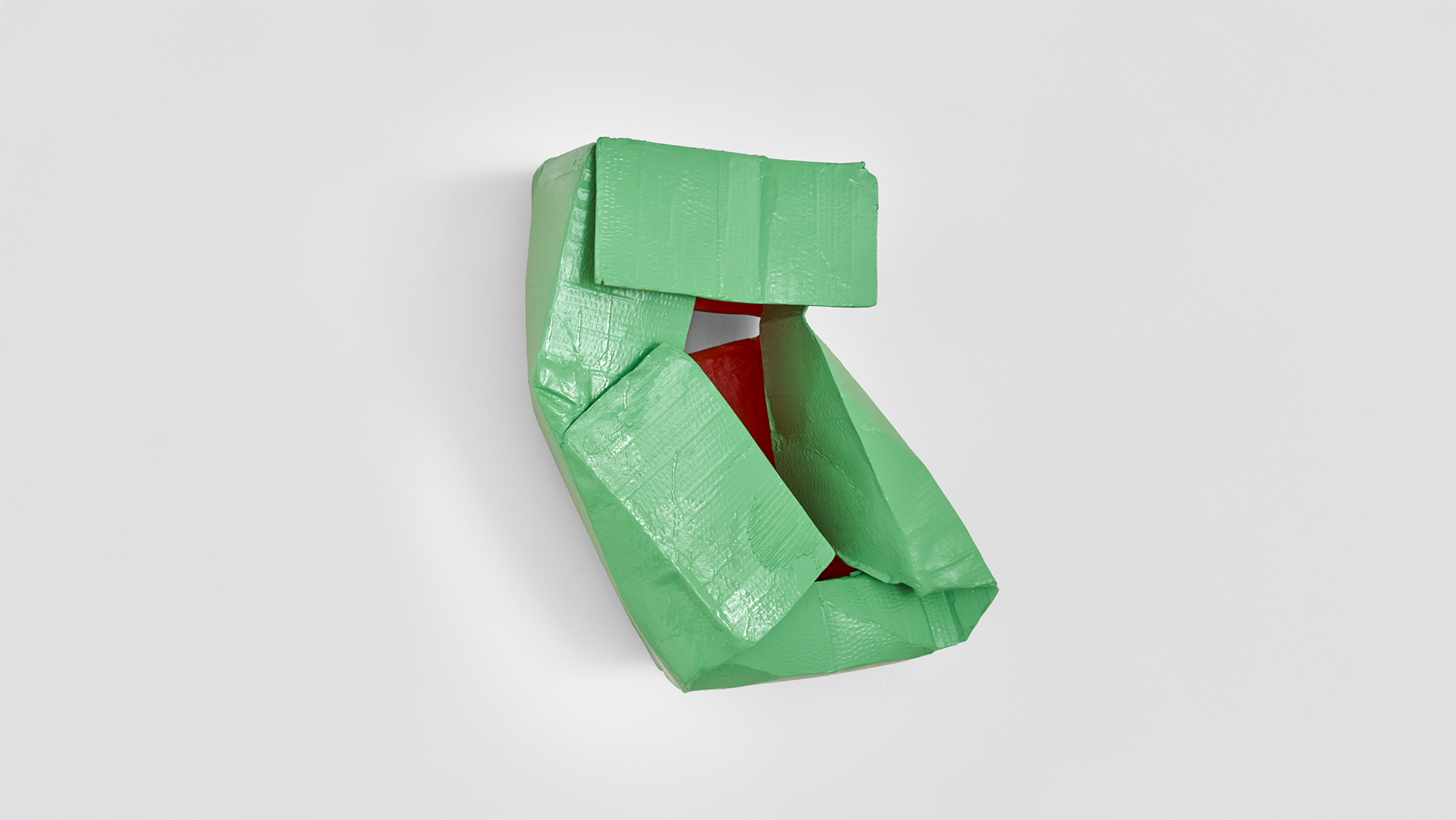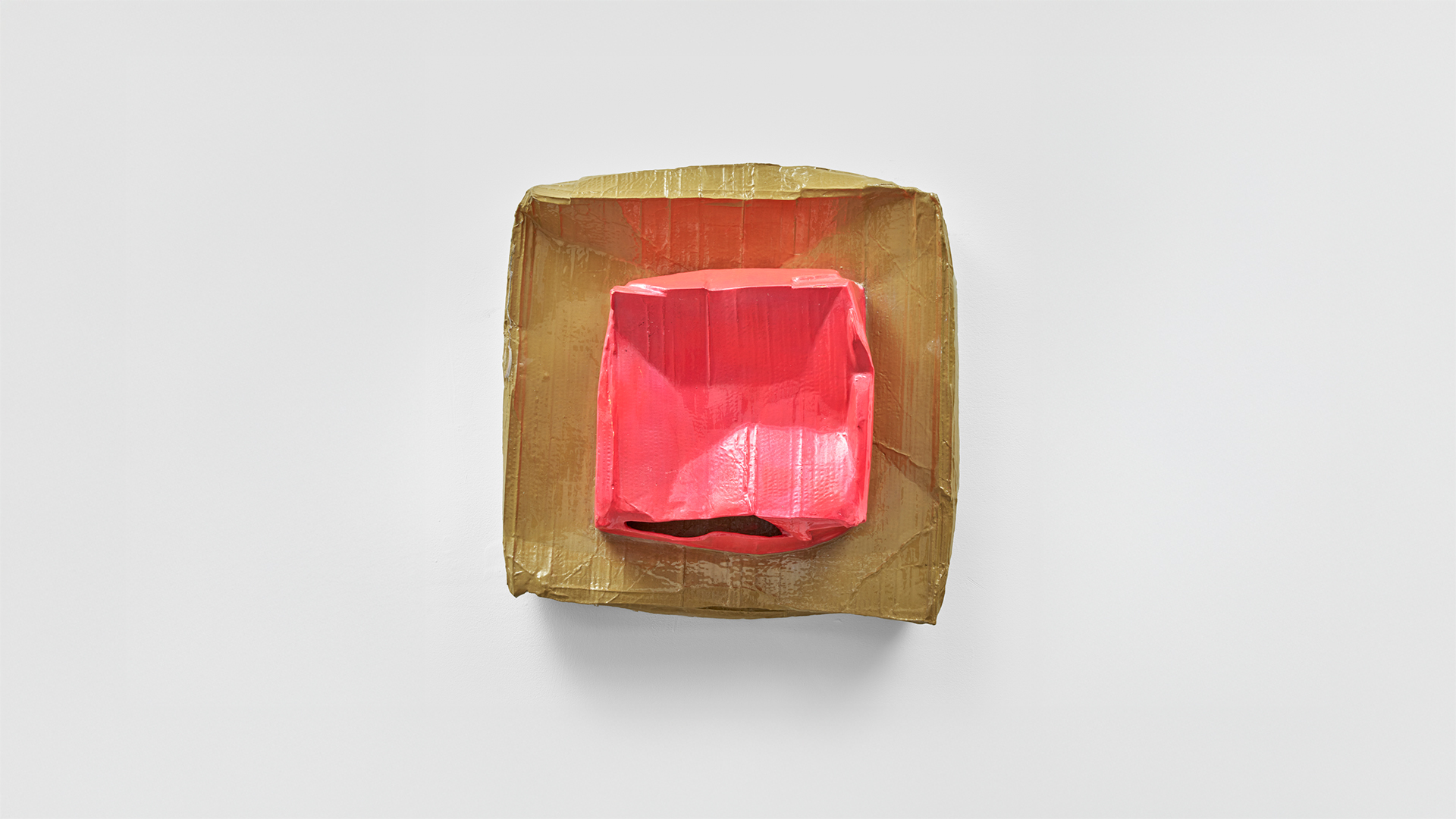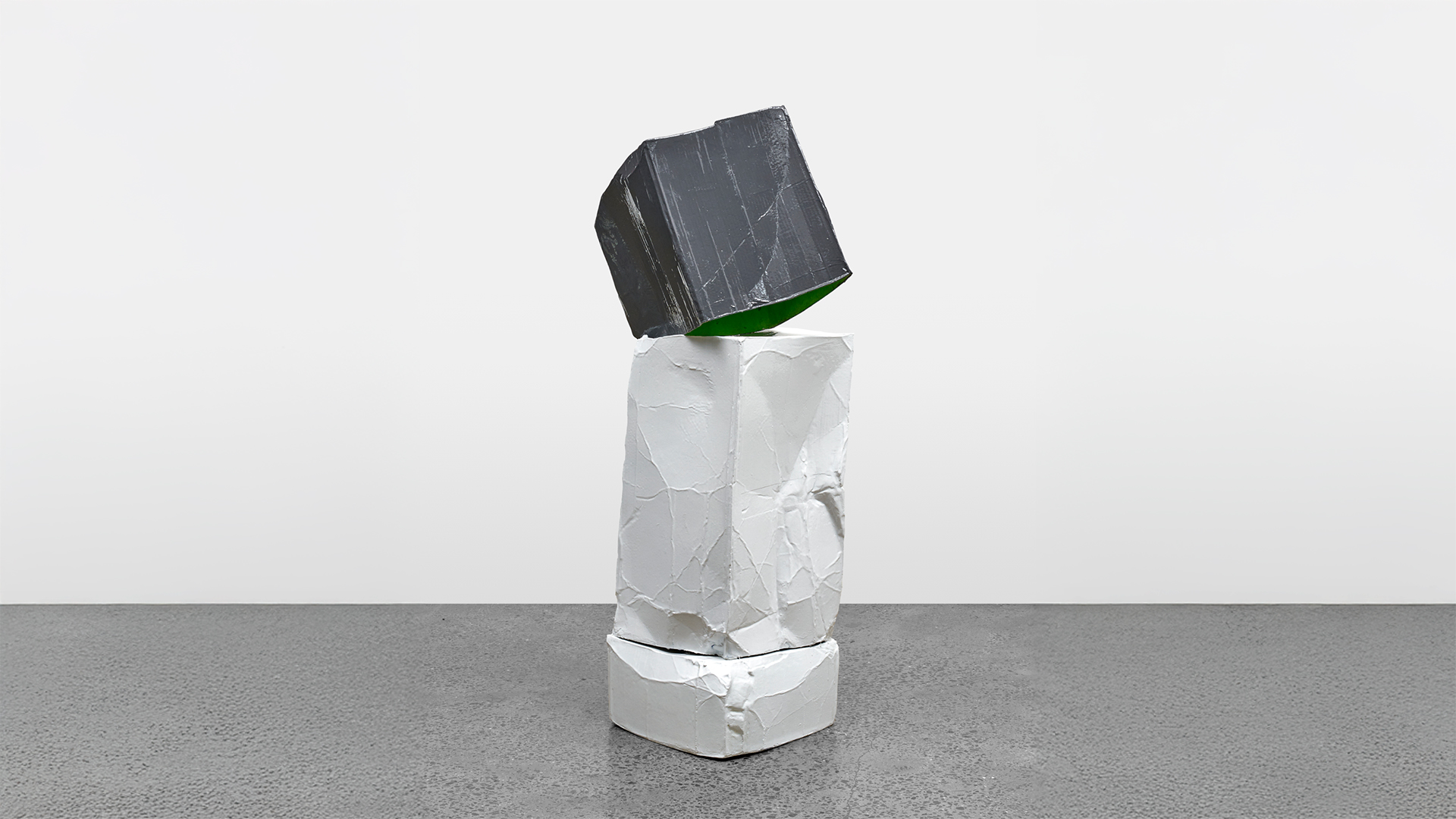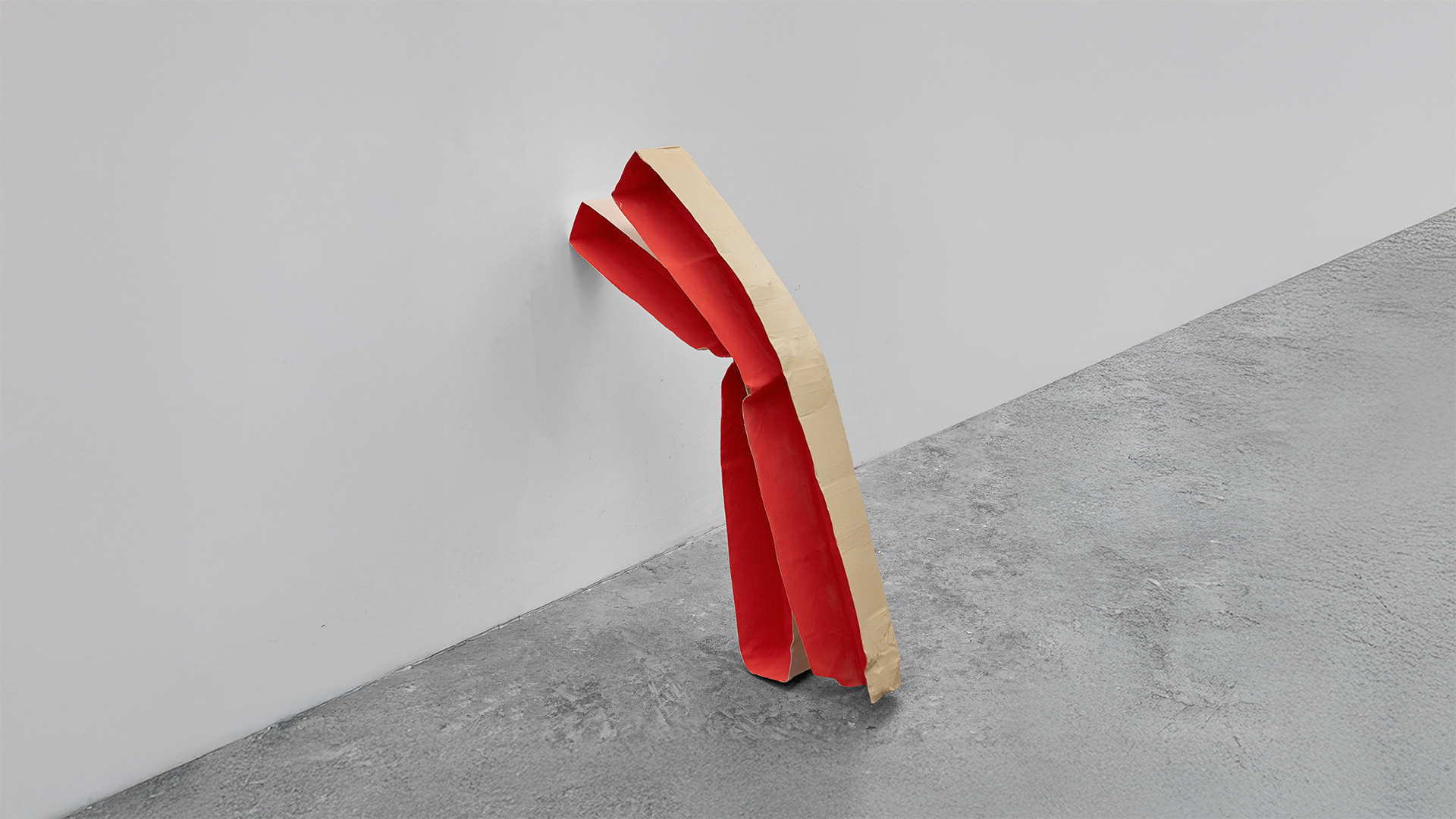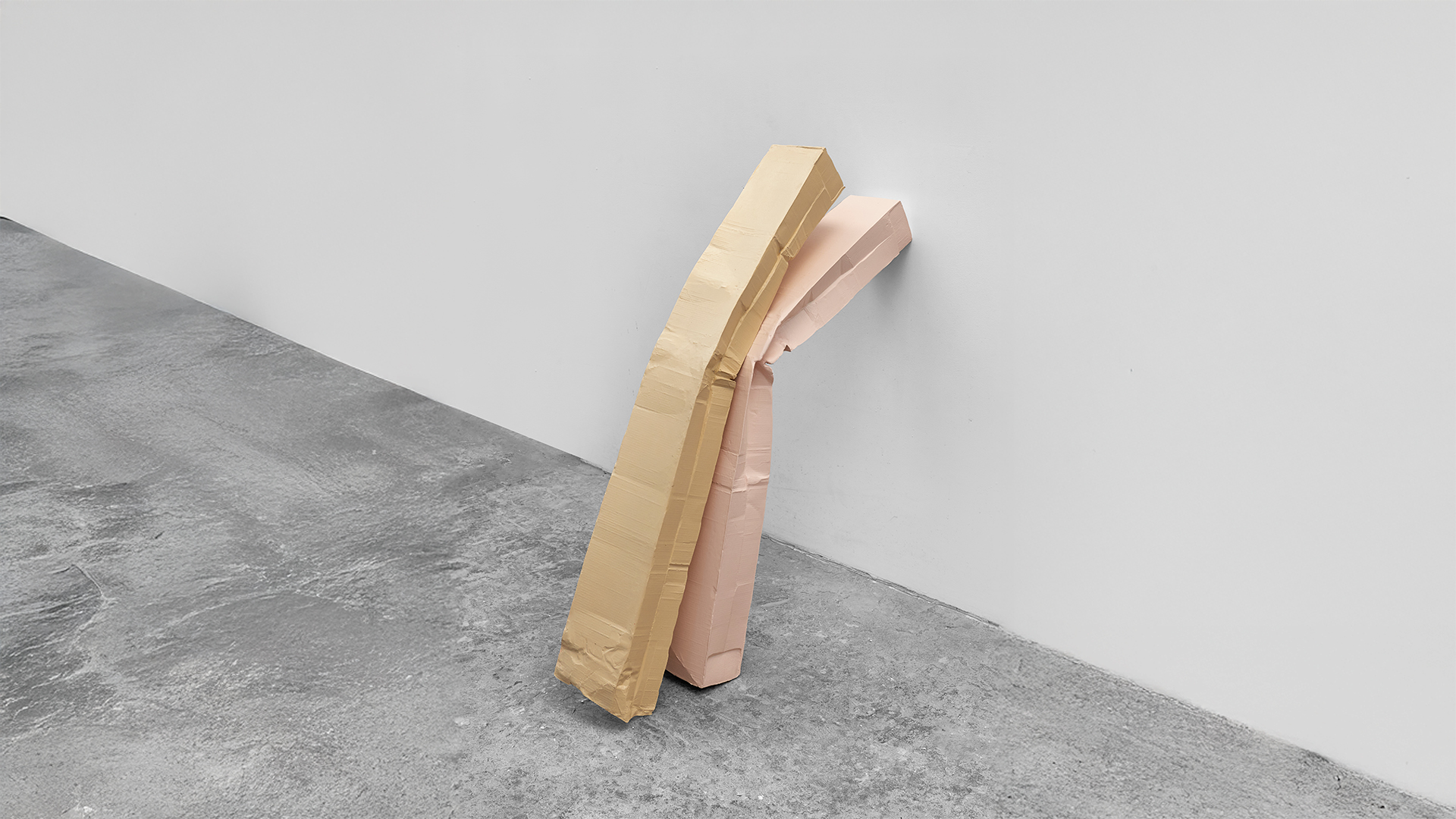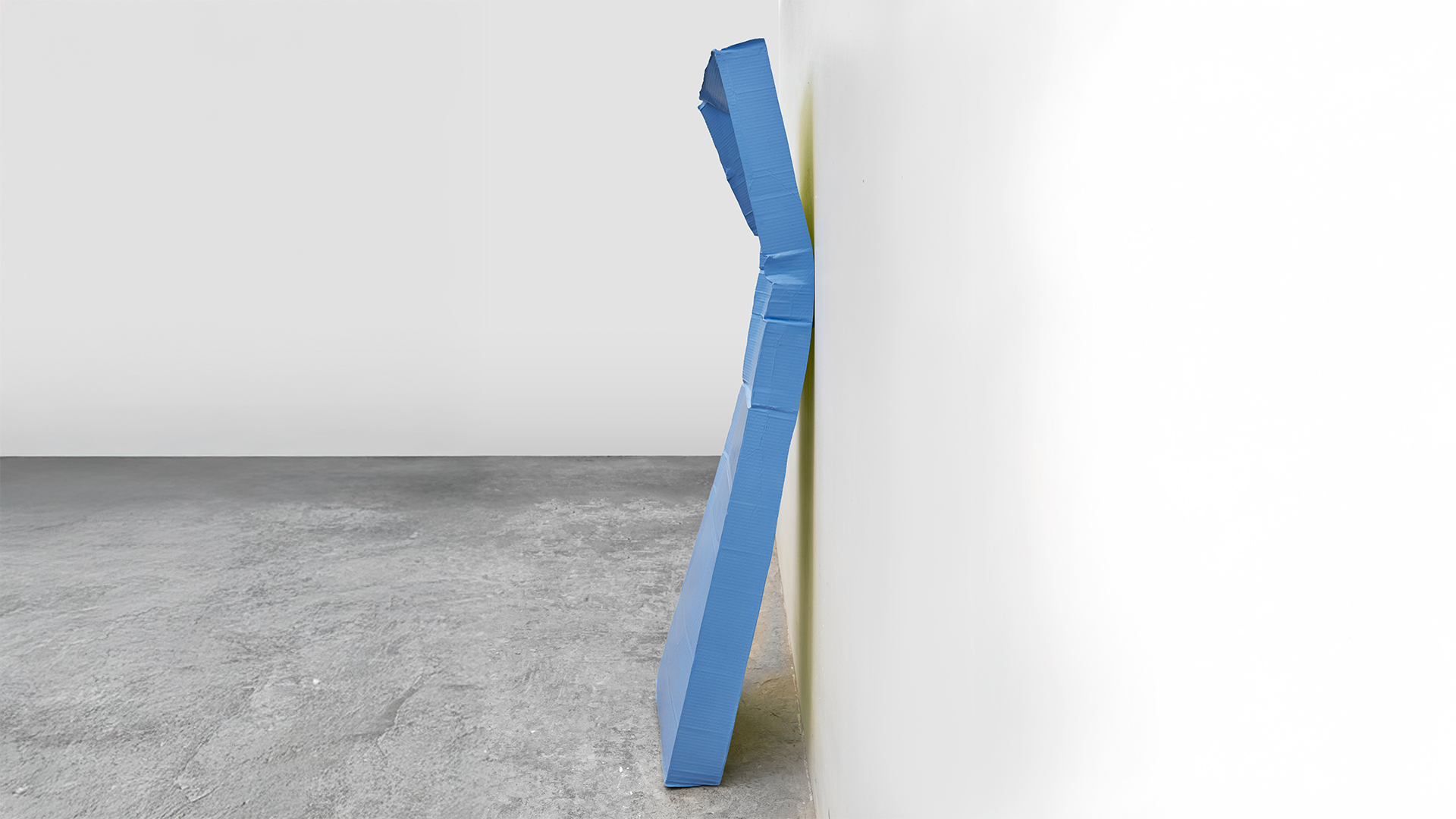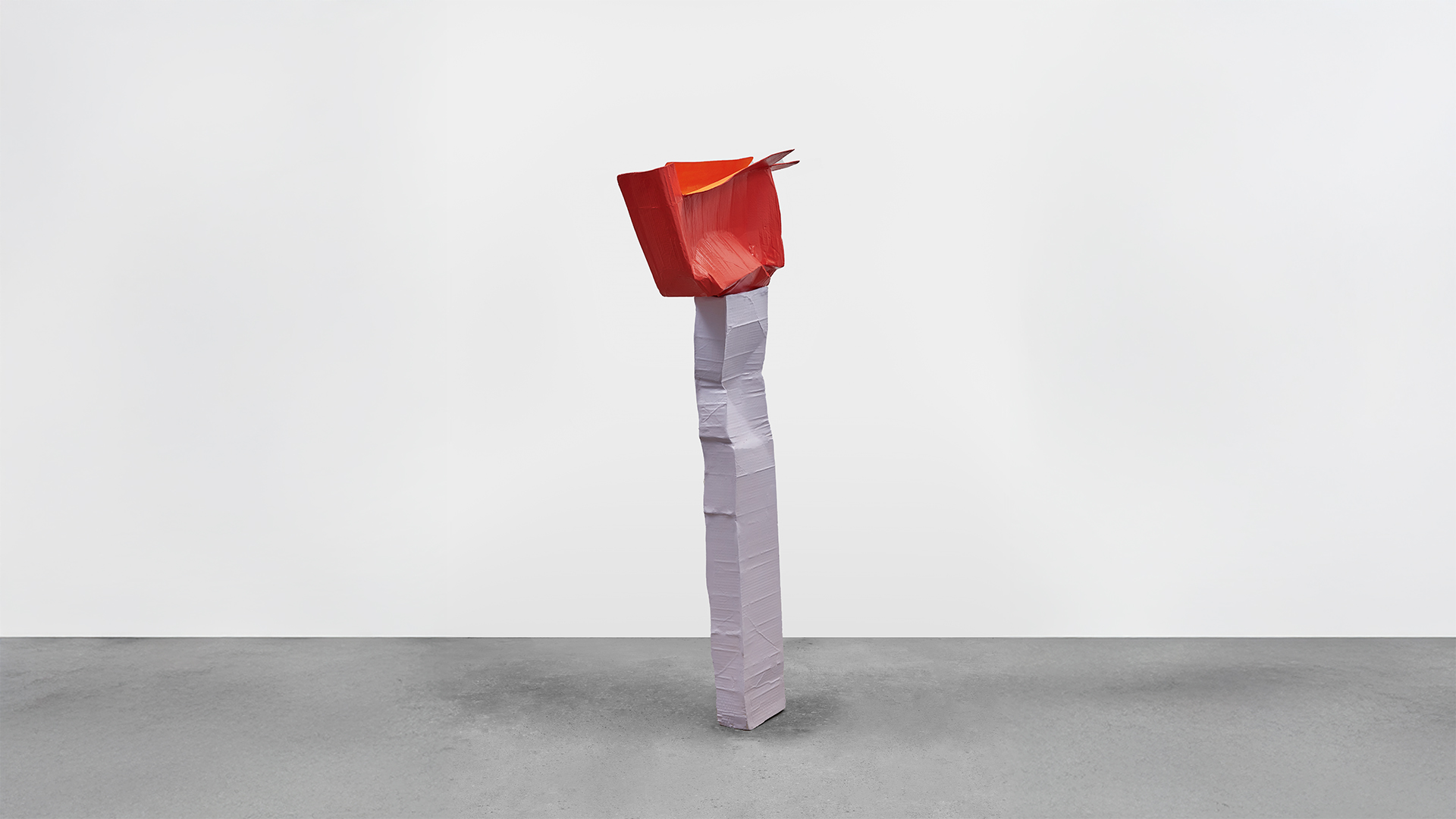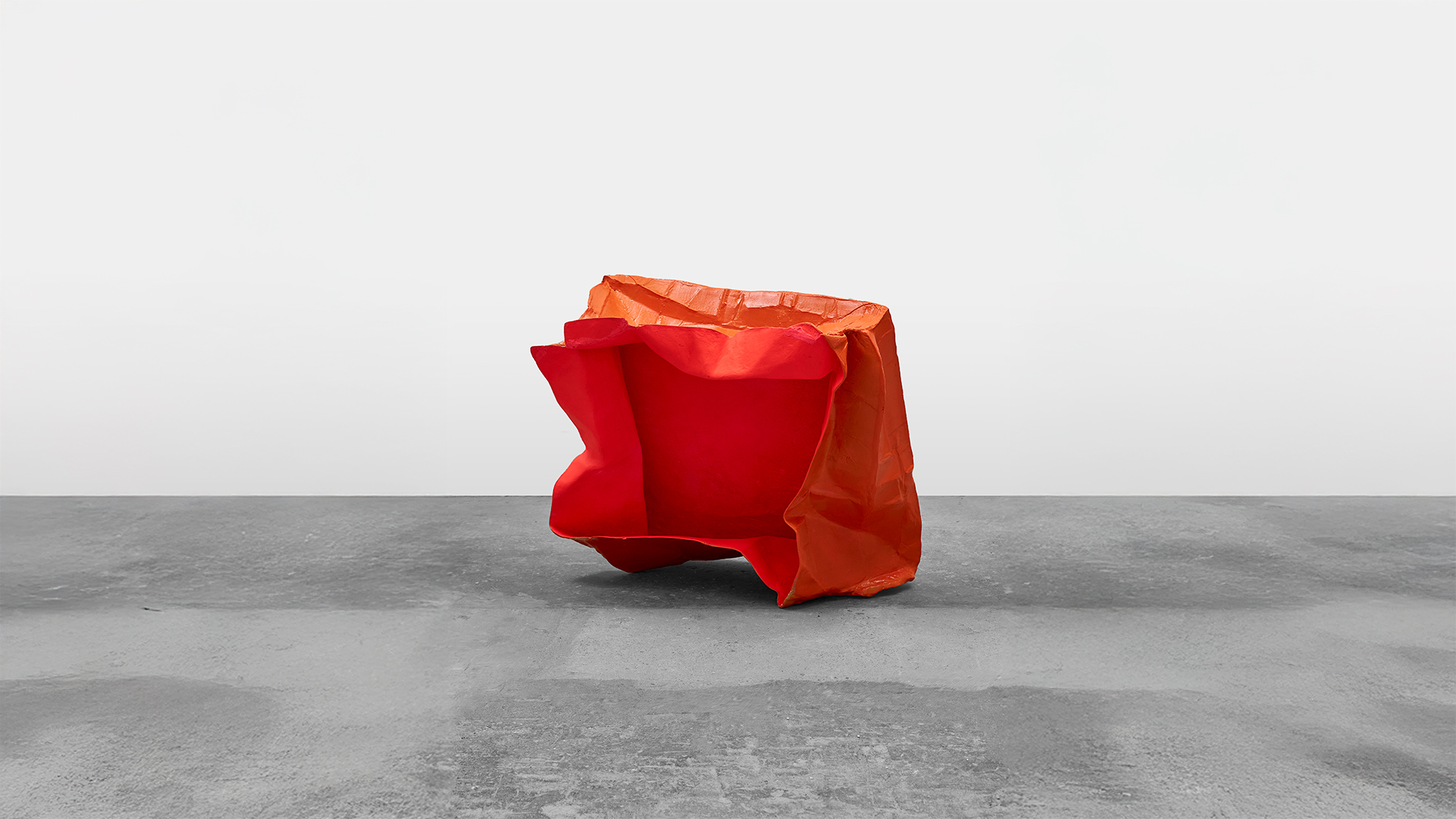Titled after the 2010 movie starring Channing Tatum and Amanda Seyfried (based off a novel by Nicholas Sparks) as well as the breakup letters women sent their husbands and boyfriends fighting in World War 2, Lina McGinn’s exhibition Dear John at EUROPA is an installation of sculptures poised around the notion of relationships.
Conscripted soldiers not the only things being shipped out, the starting points for McGinn’s Dear John are discarded cardboard boxes found and rescued from the street. Born hollow, disposable and predominately for single use, the boxes can be seen as stand-ins for figures: opportunities for the artist to explore themes of conflict, gender, human connection, intimacy and humility. After being professionally-wrestled, crushed and man-handled by the artist, the inside of the boxes are coated with a fiberglass resin that captures their beaten up forms and are then thrown out. The fiberglass molds of the forms are then cast in polymerized gypsum and painted in bright high finish gloss meant to reference moving vehicles such as cars and boats. Funny in the way that sometimes sad things are, to summarize: after being rescued and brought indoors, the boxes are then roughed up, used as a model for a more efficient material and when all that’s through—chucked back onto the proverbial streets once more.
A pile-up of hard bodies in every sense of the word, the sculptures of Dear John––like men of a certain age (or all of us, really) are wrecked, battle wrought and definitively shiny. In loose homage to fallen soldiers of modernism like John McCracken and John Chamberlain (another John the exhibition is being addressed to), Josef Albers and Donald Judd, the sculptures are installed throughout the exhibition interacting with one another.
Circling back on relationships, the exhibition could be viewed as one long case study examining the many ways we struggle and attempt to relate to one another and the world around us. In this vein the titles of the sculptures are
all taken from listings on Craigslist's Missed Connections. In lieu of words the works speak in material, hinting towards: masculinity (cars! action! beating things up!), rebirth (lowly cardboard redeemed in architectural
gypsum!), taste (camp romance versus Big Deal Art!) and the history of postwar sculpture at large.
Like everyone already knows at this point: gloss doesn’t hide cracks–it mostly defines them and cars (much like points made in essays) can be used for more than just driving things home. In Dear John, love is war but it’s also
an auto show; casts of brutalized cardboard painted like cars and posed like bodies: neglected, discarded and scrapped for parts. After serving their purpose the boxes are tossed aside, reclaimed (through violence), recast
and staged throughout the exhibition in varying positions. The artist’s first exhibition with EUROPA in her native New York—––a junkyard of broken (or at least visibly damaged) hearts.
— Justin Chance

